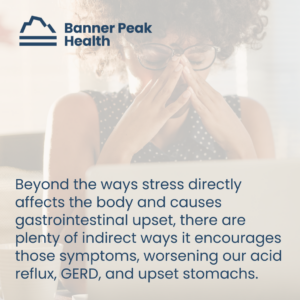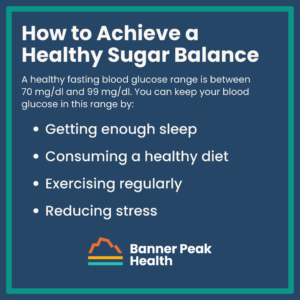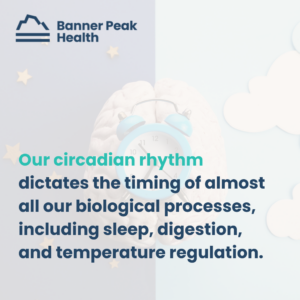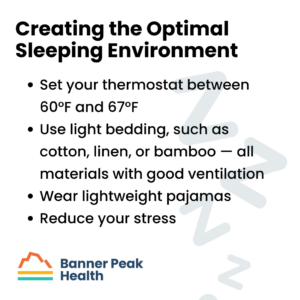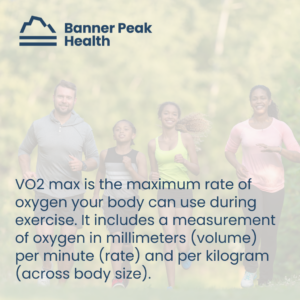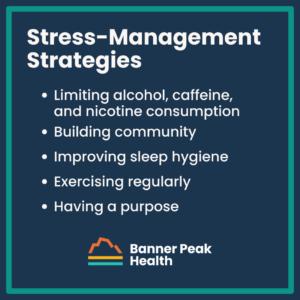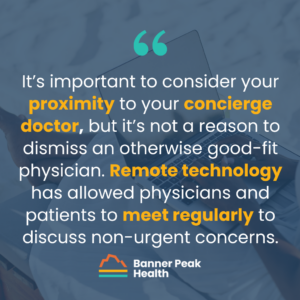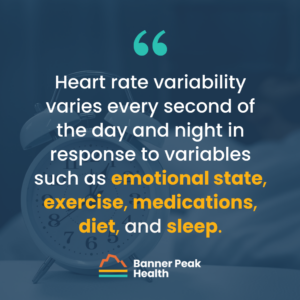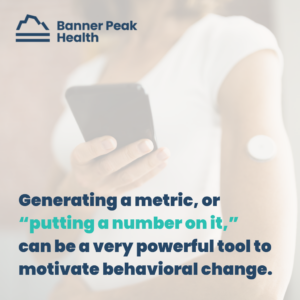Can Stress Cause Acid Reflux?
We’ve all heard the warning that stress causes ulcers. But is that true? Can stress cause acid reflux, ulcers, and an upset stomach?
It’s true! Your grandpa was right!
Today’s research demonstrates that people experiencing chronic stress are almost twice as likely to experience GERD symptoms. But how does it happen?
How Stress Impacts the Body
Stress has a huge physiological impact on the body.
In previous blog posts, I explained how stress affects heart rate, heart rate variability, and blood pressure. These indicators are functions of the autonomic nervous system, which comprises the sympathetic nervous system. This system mediates the fight-or-flight responses.
We also have a parasympathetic nervous system that mediates our rest and digest responses. To stay healthy, we need to keep these responses balanced. If these systems fall out of balance, disease is likely.
For example, in stressful situations, the sympathetic nervous system overwhelms the parasympathetic nervous system, impairing the digestive system. The result is that digestion slows down, and food backs up in the stomach and reverses direction.
Additionally, stress enhances our sensation of belching, bloating, and digestive discomfort due to hypersensitization of the nervous system. Stress increases the amount of acid produced in the stomach, which changes the content of the gut microbiome. This can cause or add to gastronomic symptoms.
This leads to a logical question: Why doesn’t all this excess acid digest our stomach lining?
While our stomach ordinarily contains a host of protective mechanisms, such as prostacyclin signaling, stress impairs their production. As a result, prolonged stress increases the risk of damage to the stomach lining, including ulcers and other gastrointestinal symptoms.
Other Ways Stress Can Cause Acid Reflux
Beyond the ways stress directly affects the body and causes gastrointestinal upset, there are plenty of indirect ways it encourages those symptoms, worsening our acid reflux, GERD, and upset stomachs.
Stress alters our behavior, and people under stress often make bad choices. They drink more alcohol, smoke more nicotine, and eat more “comfort food,” which usually contains more sugar and unhealthy fats. All these choices increase the risk of acid reflux, GERD, and stomach upset.
Are There Risk Factors for Acid Reflux?
Yes. Certain lifestyle choices increase your risk of acid reflux. These include:
- Alcohol consumption
- Nicotine use
Also, consider these other risk factors:
- Elevated body mass index (BMI), specifically intra-abdominal obesity
- Hiatal hernias
- Pregnancy
- Medications, including NSAIDs
How to Manage Stress and Acid Reflux
Since stress has a direct biological impact on the digestive tract, it’s worth reducing it as much as possible. Focus on the most impacted aspects of your life, such as your sleep and exercise routines. Improving these is often the best way to reduce stress fast.
Sometimes, professional help is required, too. Stress’s impact often manifests as physical symptoms, such as stomach pain. If you can’t resolve these symptoms alone, don’t hesitate to seek help from a professional, whether that be your physician or a therapist.
Your mental health and your physical health operate hand in hand.
Today’s Takeaways
If you remember nothing else from this blog post, remember this:
You asked, “Can stress cause acid reflux?”
The answer is, “Yes. It does.”
The best thing you can do to improve your acid reflux is to manage your stress level. I’ve written about this extensively, but here are some quick tips:
- Prioritize quality sleep
- Try meditation (here’s a cheat sheet!)
- Spend more time in nature
- Exercise regularly
- Embrace social connections
- Don’t abuse substances (alcohol and nicotine)
- Seek professional help
As always, we’re here to help if you need us, and our blog is full of tips for improving your health and well-being.
How to Safely Find Your Blood Sugar Balance
Sugar can cause all sorts of bad health outcomes, from cavities to diabetes to cardiovascular issues. But when we say “sugar balance,” what exactly do we mean?
There are two definitions:
- ACEVA created a popular supplement called “Sugar Balance” and marketed it to diabetics. In 2021, ACEVA received a warning letter from the FDA to cease unsubstantiated medical claims, as Sugar Balance didn’t meet the FDA’s requirements for diabetes treatments. Supplements like this are dangerous and misleading.
- The “sugar balance” we’re discussing in this post is the balance of glucose in your blood. This is not a DIY topic. If you experience elevated blood sugar, consult your doctor — he or she will come up with an individualized treatment plan.
Let’s explore sugars (natural and added) and how to achieve a healthy sugar balance.
What’s the Difference Between Natural Sugars and “Added” Sugars?
Natural sugars are sugars naturally found in foods. They’re ingested in complete foods with protein, fiber, etc., digested slowly, and converted into glucose by your body.
Added sugars are a part of food processing and are often high-fructose sugars derived from corn syrup. They’re added for taste, not nutrition.
Your body absorbs these sugars rapidly, leading to “sugar rise, sugar crash” cycles. The rapid rise, especially because of fructose, is associated with excess caloric deposition in the liver as fat, which can cause non-alcoholic fatty liver disease.
Since these calories aren’t associated with other nutrition, we call them “empty calories.”
Where Does Sugar “Hide”?
Sometimes, sugar hides in plain sight. Even foods we think of as “healthy” hide empty calories.
There are four calories in every gram of added sugar. Consider the following sugar amounts:
- Flavored yogurt: Up to 32 g in 6 oz
- Instant oatmeal: 10 to 15 g per packet
- Peanut or almond butter: 6 g per two tablespoons
- Granola bar: 8 to 10 g
- Canned fruit: Up to 26 g per cup
- Protein bar: Up to 22 g
Read those nutrition labels and pay attention to what you eat.
How to Achieve a Healthy Sugar Balance
How can you achieve a healthy blood sugar balance? Can (and should) you do more than just cut sweets from your diet?
A healthy fasting blood glucose range is between 70 mg/dl and 99 mg/dl. You can keep your blood glucose in this range by:
These methods will help whether you currently have health complications or not. However, if you’re diabetic or at risk for developing diabetes, continuous glucose monitoring can also be extremely beneficial. Discuss your options with your doctor before starting a new treatment plan.
Sugar Is Not Your Friend
Consistently elevated serum glucose is associated with a host of poor health outcomes, including:
- Myocardial infarctions
- Cancer
- Stroke
- Pre-diabetes and diabetes
- Diabetic neuropathy
- Blindness
- Kidney disease
- Diabetic retinopathy
- Glaucoma
And more. Consuming excess sugar can shorten your lifespan and healthspan, especially if you already have health conditions like diabetes that require careful monitoring. Avoid these consequences by avoiding added sugar and maintaining a healthy sugar balance.
If you’d like guidance from a trusted expert, reach out to Banner Peak Health. Our team of physicians is excited to help you live your longest, healthiest life.
Night Sweats: Understanding the Causes and How to Stay Cool
Do you often wake up in the middle of the night sweating, throwing the blankets off, turning up your fan, unable to find relief? Do you get up in the morning exhausted, asking, “Why do I get so hot when I sleep?”
You’re not alone.
Fourteen percent of American adults say they always feel too hot when they sleep, and another 43% say they “occasionally” do. What causes all this overheating? What can you do about it?
How Your Body Regulates Its Temperature During Sleep
Our circadian rhythm dictates the timing of almost all our biological processes, including sleep, digestion, and temperature regulation.
If our circadian rhythm deviates from its norm, we may feel too hot or cold while we sleep.
Common Contributing Factors
Several factors can throw our circadian rhythm out of whack.
We (humans) are inefficient from a metabolic perspective. We’re analogous to an incandescent lightbulb — about 75% of our energy intake from ingested calories goes toward heat generation rather than motion or growth.
Thus, anything that increases our metabolism generates excess heat. Common factors include:
- Evening exercise (within four hours of bedtime), which jump-starts our metabolism
- Some medications
- Infections with low-grade fevers
- Certain cancers
- Hormonal conditions, including:
- Menopause, which reduces estrogen levels
- The luteal phase of the menstrual cycle, which can increase the body’s temperature by around 0.3°F (0.7℃)
- Pregnancy, which increases progesterone levels
- Hyperthyroidism
Although some factors are unavoidable, you can strive to increase your sleep comfort. We’ll explore some methods for cooling down at night. However, if your symptoms persist, you should contact your doctor for an exploration of the underlying cause.
Creating the Optimal Sleeping Environment
Our circadian rhythm includes a drop in core temperature of up to 1.8°F over the course of the night. Excess heat can interfere with this process and hamper our sleep. Follow these suggestions to stay more comfortable at night:
- Set your thermostat between 60°F and 67°F
- Use light bedding, such as cotton, linen, or bamboo — all materials with good ventilation
- Wear lightweight pajamas
- Reduce your stress:
- Exercise earlier in the day
- Spend time outside
- Meditate
- Avoid caffeine and alcohol
- Regularly connect with friends and family
Today’s Takeaways
If you’re struggling to answer the question, “Why do I get so hot when I sleep?” practice the tips in this post and see if you can find relief.
Here’s a quick summary:
Determine why you’re overheating:
- Exercising too late?
- Side effect of a medication?
- Do you have an infection or a fever?
- Do you have a hormonal imbalance?
Try these tips to find relief:
- Set your thermostat between 60℉ and 67℉
- Use lightweight bedding, such as cotton, linen, or bamboo
- Wear lightweight pajamas
- Reduce your stress:
- Exercise earlier in the day
- Spend time outside
- Meditate
- Avoid caffeine and alcohol
- Regularly connect with friends and family
If none of those help, ask your physician about other solutions.
Remember, healthy sleep is crucial to overall wellness. Don’t underestimate its importance, and don’t procrastinate getting help.
We at Banner Peak Health are happy to help optimize your sleep. Contact us today to discuss solutions.
Why Is My VO2 Max Going Down? (And How to Increase It)
More people are discovering the importance of VO2 max and have begun using wearables like Garmin, Oura Ring, and Apple Watch to monitor it. But what happens if your VO2 max suddenly drops?
In this blog post, I’ll explain VO2 max and its importance. I’ll also answer the questions, “Why is my VO2 max going down?” and “How can I increase it?”
What Is VO2 Max and Why Is It Important?
VO2 max is the maximum rate of oxygen your body can use during exercise. It includes a measurement of oxygen in millimeters (volume) per minute (rate) and per kilogram (across body size).
VO2 max assesses the health of your entire cardiovascular system, including heart, lung, and blood vessel function. It even evaluates muscle cells down to their mitochondria. It’s an extremely accurate predictor of all-cause mortality.
Why Is My VO2 Max Going Down?
A decline in VO2 max can alarm people who exercise regularly. Here are a few reasons you may notice a reduction in your VO2 max:
- Anyone can have a bad day. Various reasons include a lack of sleep, over-exercising, illness, or stress.
- A medium-term decline over weeks may occur due to weight gain or insulin resistance (more on this in a bit).
- Age-related declines.
- Anemia.
How to Improve Your VO2 Max
Improving your VO2 max comes back to how you measure it.
The gold standard for measuring your VO2 max is a stress test, which involves running on a treadmill or riding an exercise bike to complete exhaustion while having your breath monitored for changes in oxygen concentration.
Many assume that to improve your VO2 max, you need to put yourself under intense mental and physical stress to be valuable.
Evidence does support that HIIT (high-intensity interval training) can improve your VO2 max; however, it’s not the only way. You should also participate in Zone 2 training.
How can large amounts of time spent plodding along at a conversational pace help you maximize your ability to go so fast you can barely breathe? The answer to this paradox involves understanding the metabolic efficacy of Zone 2.
For exercise, our muscles use two fuels as energy: fatty acids and glucose. At slower speeds, we metabolize fatty acids and can go all day. Fatty acids are “clean fuel.”
At faster speeds, we metabolize progressively more glucose. The process creates progressively more acidosis and causes symptoms including increased heart rate, shortness of breath, and burning muscles. Our struggle with acidosis is why we can’t maintain faster paces as long as slower ones.
Therefore, the longer you can go while being fueled by fatty acids, the greater the speed you can reach before your body switches fuel sources, which causes you to feel the effects of acidosis.
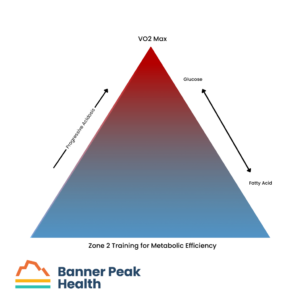 What About Genetics?
What About Genetics?
Although we all start with different genetic propensities for VO2 max, we’re all capable of improving it with a concerted effort.
No matter our age or genetic background, there is room for improvement.
Don’t Panic
As more people learn about VO2 max’s importance, it’s crucial to understand that current wearables aren’t advanced enough to accurately measure VO2 max. I track mine with both a Garmin device on my bike and the gold standard. The Garmin device varies with up to a 25% error.
So, if you look at your wearable and see a result that makes you ask, “Why is my VO2 max going down?” don’t panic. Periodically check your wearable against the gold standard for a correlation.
If you’re a Banner Peak Health member, we’re happy to help. Schedule an appointment today.
What Supplements Lower Cortisol?
What supplements lower cortisol? Unfortunately, the answer may be none.
Many short-term studies of supplements show a transient reduction in cortisol. However, because these studies aren’t long-term, they don’t address years-long health issues.
Also, supplement manufacturing is unregulated. There’s no guarantee that the substance reviewed in those studies is the same as what’s in the bottle you purchase.
Taking a pill means you’ve chosen a short-term cost over a long-term investment. It may yield poor results, and you’ll likely be disappointed.
In this blog post, I discuss cortisol, what supplements lower cortisol (or don’t), and how you can successfully regulate your cortisol naturally.
What Is Cortisol?
Cortisol is a stress hormone your adrenal glands release when they receive a signal from your hypothalamus. This process is part of your fight-or-flight response.
There are times when your body rests, digests, or reproduces. Other times, when you enter “fight-or-flight” mode, your body is triggered to release adrenaline (also called epinephrine) and cortisol.
These chemicals pulse through the bloodstream, increasing blood glucose and heart rate as they prepare our bodies for action. This hormonal activity can last from a few minutes to several hours.
Among these chemicals is a neurotransmitter called norepinephrine, which also mobilizes the body for physical activity. Cortisol is released from a different part of the adrenal gland than norepinephrine and responds much slower — it can last many hours.
Think of epinephrine and norepinephrine like soldiers stationed at your body’s front lines, ready to fight at a moment’s notice. By contrast, cortisol is on a slow-moving train. As the train brings cortisol to the front lines, it’s unable to take resources to other parts of the body.
When our bodies sustain cortisol over long periods (such as in the case of chronic stress), it hurts almost every other bodily system. From digestion to immune function to reproductive issues, the effects of sustained cortisol are myriad and often dangerous.
What Supplements Lower Cortisol?
Like you, I’ve seen supplements online that allegedly lower cortisol, such as:
I’m skeptical of these supplements. The more treatments exist to address one health issue, the less likely those treatments are to be effective. If one of them worked, we wouldn’t need alternative options. We’d all use that one treatment.
I’ve also looked into the existing research, and I’m not impressed. As I mentioned earlier, they’re short-term and minimal at best. The best example I could find was a meta-analysis (a review of multiple studies) of ashwagandha. Unfortunately, only seven studies met the criteria for review, and of those seven, only five showed reduced cortisol. There were side effects and uncertain formulation.
The literature is lacking. Sure, supplement manufacturers can say “studies show,” but those studies aren’t high-quality.
The Allure of a Magic Pill
I understand the appeal of a magic pill, and I wish I could prescribe one to my patients. The compulsion to find an easy fix is human nature.
But we’re adults. We’ve lived enough life to realize that’s not how it works. You don’t get anything of value for free. If you want something worth having — long-term health, for example — you’ve got to work for it.
Stress-Beating Strategies
So, what supplements lower cortisol? Right now, none. Thankfully, there are other ways to lower cortisol.
Stress reduction is the best way to lower your cortisol. That’s much easier said than done, which is why we work with our members to develop personalized stress-management strategies. These strategies may include:
- Limiting alcohol, caffeine, and nicotine consumption
- Building community
- Improving sleep hygiene
- Exercising regularly
- Having a purpose
Those are the foundations of a healthy life. But you can’t manage what you don’t measure, so we also recommend tools that monitor your HRV (heart rate variability). Knowing your HRV can help you manage your stress.
As always, we’re here to help you reach peak health. Contact us any time.
How to Get More REM Sleep: Proven Strategies for Quality Rest
Adequate sleep maintains optimal health in both body and mind.
 Sleep helps your body:
Sleep helps your body:
- Maintain peak physical performance
- Maintain immune function
- Repair injuries
- Control weight
Sleep helps your mind:
Let’s explore REM, why it’s important, and how to get more REM sleep.
What Is REM Sleep and Why Is It Important?
Your sleep architecture is divided into 90-minute cycles. Each cycle includes stages of lighter sleep, deeper sleep, brief periods of wakefulness, and REM sleep.
REM stands for “rapid eye movement” because, during this stage of sleep, our eyes move rapidly under our eyelids. Brain waves during this stage are the same as when we’re awake, but we cannot use our muscles, so we can’t move. During this sleep stage, we dream, and the inability to move our muscles prevents us from acting out our dreams.
During this crucial stage, our brains consolidate our memories, and we attach emotional impact to them.
How to Get More REM Sleep With Better Sleep Habits
The sleep cycles that repeat every night are influenced by other bodily functions (some related to hormone release) that occur earlier in the day. How these cycles are timed determines how well we achieve REM sleep that night.
You can improve and increase your REM sleep with some simple changes in your sleep habits.
Many people have heard advice about light exposure, including avoiding blue light before bed, but there’s much more to “light theory” and circadian rhythms. Research demonstrates that the best light exposure to optimize your circadian rhythm is “first morning light” or “dawn light.” It’s one of the most potent signals we have to set (or reset) our circadian rhythms. Sleeping well at night begins with good light exposure first thing in the morning.
I’ve also discussed the TUO Life Bulb, which you can use at home to obtain good morning light exposure.
Another crucial step is to avoid the alarm clock whenever possible. Waking up to an alarm clock isn’t a pleasant way to start your day. Also, the last 90-minute sleep cycle of the night contains the most REM sleep. An alarm clock interrupts your natural sleep cycle at possibly the worst time — at the end, robbing you of valuable REM sleep.
Alarm clocks are REM killers, but they aren’t the only ones. Anything that hurts your sleep hurts your REM sleep. For example, obstructive sleep apnea is one of the biggest sleep impairers we help our members tackle, but we have a not-so-secret weapon.
How Banner Peak Health Can Help You Get More REM Sleep
We’re excited to work with a new sleep image device that allows you to screen for obstructive sleep apnea by wearing a small rubber ring that transmits a signal to your smartphone.
Through advanced technology and other lifestyle changes, we enjoy helping our members figure out how to get more REM sleep and feel refreshed daily.
How to Get More REM Sleep by Changing Lifestyle Factors
Any factor that enhances your sleep quality also enhances your REM sleep.
My best advice regarding how to get more REM sleep is:
- Be cognizant of the chemicals you ingest (e.g., alcohol, caffeine) and their effect on your body. Some patients are more sensitive than others.
- Use stress-reduction techniques like meditation.
- Follow the suggestions in this blog post.
- Get adequate exercise.
If you need more help or have additional questions, reach out. We’re happy to talk.
Sleep is medicine. It affects every aspect of your health. Getting adequate sleep is one of the best things you can do for your body. Don’t underestimate its value.
How to Find a Great Concierge Doctor Near Me
Finding a doctor can be challenging, especially when exploring concierge medicine for the first time.
This blog post will explain the ins and outs of concierge medicine, how to search for a “concierge doctor near me,” and why Banner Peak Health stands out.
What Is Concierge Medicine?
Merriam-Webster defines concierge medicine as a healthcare practice of primary care physicians in which patients pay a membership fee for enhanced access and services.
We at Banner Peak Health define concierge medicine as a relationship-focused healthcare model.
Because the concierge model affords us more time with each patient, we get to know each patient’s personality more deeply than physicians in a traditional practice can. We also leverage that time to explore each patient’s symptoms intellectually, coordinate with other doctors involved in their care, and educate the patient about medical terminology.
Time is the ingredient that takes you from stellar internal medicine to stellar concierge medicine.
The Differences Between Concierge Medicine and Conventional Medicine
I often use the saying “He who pays the piper picks the tune” to explain concierge medicine to anyone unfamiliar.
The financial structure of medicine affects the care patients receive. In a traditional fee-for-service model, the insurance company funds the care and is the de facto boss. However, in a concierge model, the patient funds the care — so they’re the boss.
At Banner Peak Health, we’re beholden to our members’ needs rather than those of insurance companies. That distinction explains our priorities, who we seek to impress, and what care we provide.
You’re entitled to a doctor who’s enthusiastic about medical care and about providing care for you. Concierge medicine circumvents physician burnout by design, so your physician is always engaged.
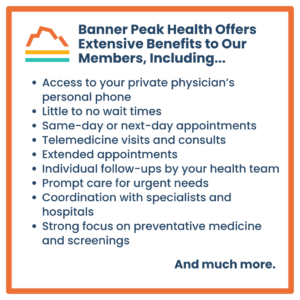 At Banner Peak Health, our mantra is “happy staff = happy patients = better health outcomes for all (patients and doctors).” We’re proud to offer extensive benefits to our members, including:
At Banner Peak Health, our mantra is “happy staff = happy patients = better health outcomes for all (patients and doctors).” We’re proud to offer extensive benefits to our members, including:
- Access to your private physician’s personal phone
- Little to no wait times
- Same-day or next-day appointments
- Telemedicine visits and consults
- Extended appointments
- Individual follow-ups by your health team
- Prompt care for urgent needs
- Coordination with specialists and hospitals
- Strong focus on preventative medicine and screenings
And much more.
What Should I Look For in a Concierge Doctor Near Me?
When you search “concierge doctor near me,” a list of practices appears. Which one do you contact? How do you identify the best fit for you? We can help.
First, you want a doctor who will be excited to be your doctor — someone enthusiastic about being a physician, providing care, explaining terminology, researching, and listening to you.
You want someone who accepts you as you are but will also hold you accountable as you pursue your health goals. Your health journey has no escalators. You have to reach the highest peaks yourself.
At Banner Peak Health, we interview prospective patients. We want patients who want to be active participants in their healthcare. We don’t have an “autopilot” option. We want to guide people who want to work to reach their health goals.
You also want a practice with a small physician-patient ratio. This way, your physician can spend ample time developing a relationship with you.
At Banner Peak Health, we see about 250 or fewer patients per physician. Typical concierge practices average between 400 and 600 patients per doctor, and traditional practices average thousands.
Is It Important to Find a Concierge Doctor Near Me?
It’s important to consider your proximity to your concierge doctor, but it’s not a reason to dismiss an otherwise good-fit physician. Remote technology has allowed physicians and patients to meet regularly to discuss non-urgent concerns.
However, there may be times when you need an in-person visit or an urgent appointment. In those cases, having a concierge doctor near you is advantageous.
We’re located in Walnut Creek, and we serve patients in the following communities:
- Walnut Creek
- Berkeley
- Oakland
- Piedmont
- Orinda
- Lafayette
- Moraga
- Pleasant Hill
- Danville
- San Ramon
- Walnut Creek
- Concord
- Clayton
- San Francisco
And beyond.
Partnering With Banner Peak Health
We’re honored that our patients trust us, and we take that trust seriously. We also practice the Golden Rule — we provide the care we would expect ourselves or would want for our family members. When you become a member at Banner Peak Health, that’s what you can expect.
If you’re searching for a “concierge doctor near me” and think we’d be a good fit, contact us. We’re happy to answer your questions.
A Physician’s Thoughts on the Oura Ring: The Latest Health Trend
Gwyneth Paltrow. Jennifer Aniston. Prince Harry. Will Smith. Shaquille O’Neal. Mark Zuckerberg. Barry Rotman.
What do these people have in common? They’ve all publicly acknowledged wearing an Oura Ring — the new medical sensation.
Oura Health was founded in 2013 in Finland. Its product, the Oura Ring, was made commercially available as a sleep-tracking device in 2016. It began with Kickstarter funding in 2015 and expanded to a market capitalization of $2.55 billion by 2022.
The Oura Ring’s original goal — sleep tracking — has expanded to include many goals, including stress management, early disease detection, menstrual cycle tracking, and more.
In the growing field of consumer wearable health devices, the Oura Ring stands out as the most powerful. However, not all its functions are well-validated.
In this blog post, I’ll explore the hype surrounding the Oura Ring. What is it? How does it work? Which features are valuable, and which aren’t?
What Is an Oura Ring?
An Oura Ring is a five-gram, titanium-encased device designed to be worn on a finger. It communicates data to a smartphone app.
Despite its small size, it continuously measures:
- Motion
- Peripheral skin temperature
- Heart rate
- Heart rate variability
- Blood oxygen saturation
Two decades into the smartphone revolution, we’ve become accustomed to an astounding array of functions built into a small device. However, when I started medical school nearly forty years ago, a device like the Oura Ring was nothing but science fiction.

The Oura Ring includes:
- A 3D actigraphy device to record motion
- A thermometer to measure skin temperature
- A photoplethysmography device to measure pulse rate
- A pulse oximeter that records oxygen in the blood
In addition to direct sensor data, the smartphone app calculates various physiological parameters using user data (gender, age, height, and weight).
Some complex algorithms use large, international population-based measurements and AI analysis. For example, the Oura Ring’s sleep metrics are industry-leading. The ability to differentiate sleep stages (awake, light, deep, and REM) is about 80% accurate compared to overnight sleep studies.
For most applications, the Oura Ring combines four possible data sources:
- Daily measured data
- Individual data baseline
- User-specific data
- Population-based comparison metrics
For example, to detect the early onset of an infection, the Oura Ring notes a change in a person’s skin temperature, heart rate, breathing rate, and heart rate variability from his or her baseline. It compares that change to a predictive population-based model.
One study noted the Oura Ring’s ability to diagnose COVID infection an average of 2.75 days before the study subjects displayed enough symptoms to seek a COVID test.
On the other hand, building a function that incorporates many layers of data means that an inaccuracy at any point compromises the entire process’s accuracy.
For example, Oura Ring has a readiness function that combines your sleep, activity, and stress scores to reflect how prepared your body is for the day. The sleep score has good validation. However, both the literature and my experience suggest that the activity score isn’t accurate and that the magnitude of error increases as the intensity of exercise increases.
The more active you are, the more difficult it becomes for the Oura Ring to measure your heart rate and track the total amount of body motion. A similar challenge affects the stress score, which measures your sympathetic nervous system at rest. Physical activity normally increases sympathetic tone.
I’ve found that the Oura Ring doesn’t differentiate when I am truly at rest compared to a brief break in moving around, compromising the stress score’s accuracy. Therefore, I don’t trust the overall readiness score’s accuracy.
The Oura Ring continues to release new functions, such as menstrual cycle tracking, which appears to be at least as accurate as tracking daily oral temperature.
How Accurate Is an Oura Ring?
The Oura Ring provides exciting ways to learn about your body’s health status in real time. I’ve grouped many of the features into three categories depending on their current quality of clinical validation:
- Accurate and valuable tool
- Possibly accurate, use cautiously
- Unproven, for entertainment purposes only

If using one of the functions motivates you to focus on a health aspect and improve your lifestyle choices, the feature is beneficial regardless of its proven accuracy level.
Does an Oura Ring Have Side Effects?
More knowledge isn’t always better.
Consumer wearables’ rising popularity has led to a new diagnosis: “orthosomnia,” an unhealthy obsession with achieving perfect sleep. Paradoxically, becoming overly focused on your quality of sleep leads to anxiety and frustration, which reduces your ability to sleep well. Knowing your sleep score upon arising can hurt your mood for the day.
Can an Oura Ring Help You Make Healthier Decisions?
I found the Oura Ring extremely helpful in my quest to become more “chill.”
I used it for several Metric-Driven Empowerment Cycles (MDECs), tracking sleep, HRV, and meditation. The measured outcome variable allowed me to make a series of adjustments to my life and observe the results. I followed only a few of the growing list of measurements my Oura Ring provided.
Depending on your interests, there are many compelling uses:
- Activity level
- Step count
- Active energy expenditure
- Total energy expenditure
- Body temperature
- Respiration rate
- Heart rate
- Heart rate variability
- Total sleep time
- Sleep stage time (awake, light, deep, and REM)
- Composite readiness score
- Composite stress score
- Composite resilience score
- Early infection detection
- Early pregnancy detection
- Menstrual cycle tracking
The list of functions continues to grow, as does the number of studies validating them.
Final Thoughts on the Oura Ring
There’s a wide array of consumer wearable health devices available. The Oura Ring is the best and will become the recommended device for Banner Peak Health’s patients.
The Oura Ring includes superb directions and educational materials. However, it becomes even more valuable when incorporated into an overall health plan.
Please let us know if you have an Oura Ring or are considering purchasing one. We want to help you derive the maximum health benefit from it.
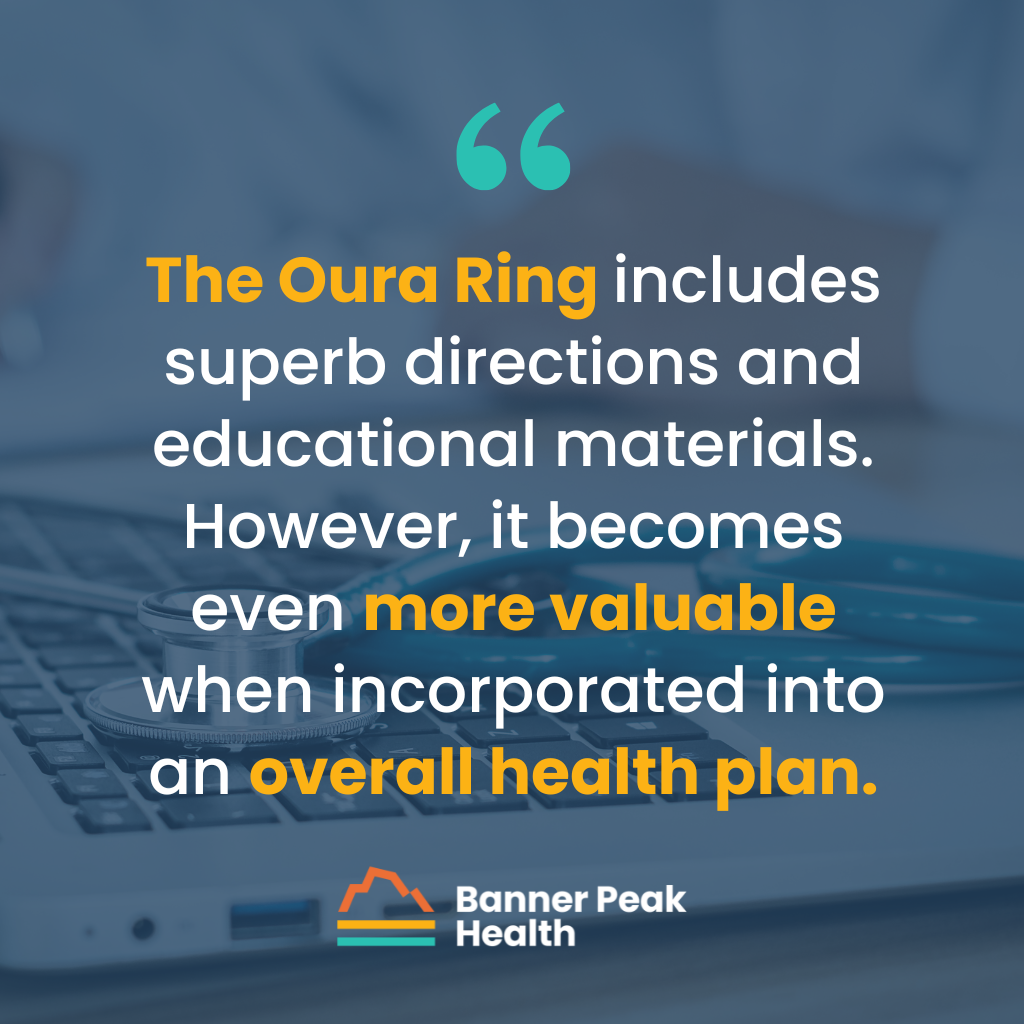
Heart Rate Variability: A New Tool for Stress Management
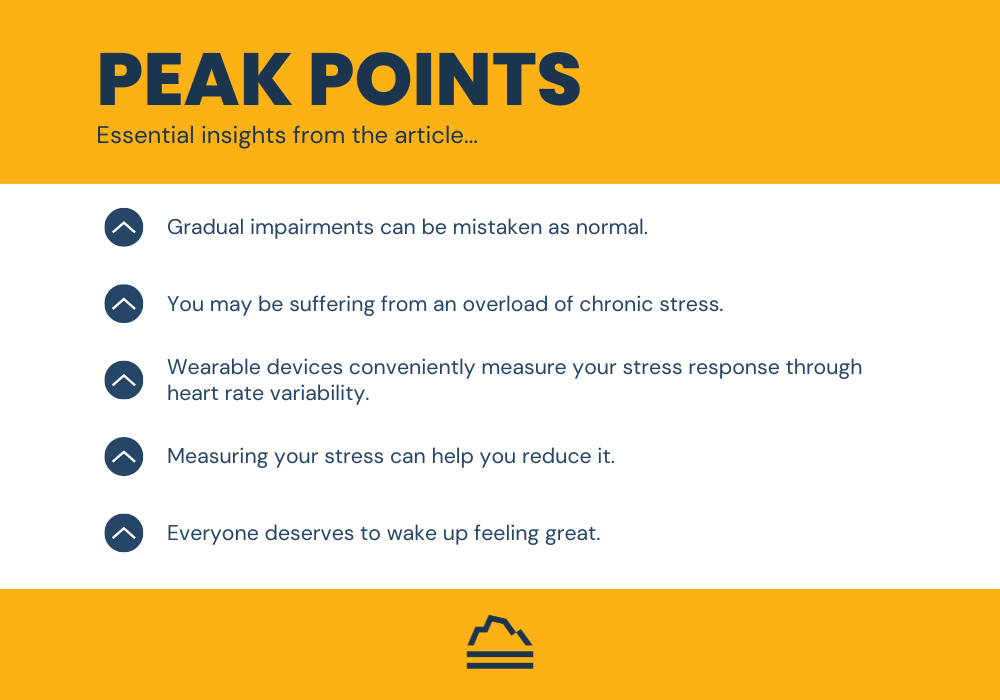
Sometimes, you don’t realize you’re stuck in a rut until your life improves.
Life’s impediments can develop slowly, imperceptibly weighing you down. Your daily experience may be suboptimal, but since you’ve felt that way for many years, you feel normal. Only in retrospect do you realize, Wow! That wasn’t my best self. I can feel so much better!
Many sophisticated tests can measure health status. How about a very simple one — the ability to wake up feeling great?
This blog will review my four-month quest to reach that goal and how I used heart rate variability (HRV) to do it.
How Stress and Heart Rate Variability Relate
I write a lot about stress and its health impacts.
For a risk factor as potent as stress, it’s surprising that we’ve lacked practical methods of measuring it until recently. The growing popularity of wearable devices has finally given us convenient access to this vital metric.
I’ve written about how heart rate variability (HRV) reflects the balance between our sympathetic and parasympathetic nervous systems. More stress increases the sympathetic tone, reducing the variability in timing between each heartbeat. Less stress allows for a greater parasympathetic tone, increasing the timing variability between each heartbeat.
Basically, the higher your heart rate variability, the more “chill” you are.
Recent blogs have illustrated the value of MDECs (Metric-Derived Empowerment Cycles), techniques for generating actionable health data to help people improve their health. Heart rate variability, as measured by wearable devices, is a helpful metric-derived empowerment cycle.
Heart rate variability reflects the sum of physiological and psychological stress sources. Worried about a final exam? Bad night of sleep? Too much (or any) alcohol? Hard workout? Sore back? Laid off from a job? Your heart rate variability will reflect it.
Technically, heart rate variability doesn’t measure the total amount of stress we are exposed to. Rather, it measures how our body reacts to stress — a subtle but important distinction.
Stress is an inevitable part of the human condition. In manageable amounts, it propels us forward, but if its intensity and duration exceed our ability to cope, we suffer adverse consequences. Heart rate variability as a metric-derived empowerment cycle quantifies how our body reacts to our total stress burden. It can also track the results of our stress-management efforts.
Heart Rate Variability’s Role in Fitness
The current abundance of products that measure heart rate variability (Apple Watch, Garmin, Whoop, Oura Ring, etc.) reflects heart rate variability’s popularity in the fitness community. Analyzing daily heart rate variability provides a valuable tool to assist athletes in monitoring their response to training.
A hard workout doesn’t make you stronger, per se; rather, a successful recovery makes you stronger. Knowing your heart rate variability can help you adjust your workouts’ intensity and timing.
For instance, an athlete who wakes up feeling “off” and notices an unusually low heart rate variability score might be better served by scaling back or eliminating a hard workout that day rather than risk overtraining and slowing overall improvement.
While using heart rate variability for sports training may be the primary use case driving its popularity, measuring variation over longer periods of time can guide decisions that affect a wider range of health outcomes.
Short-term stress is adaptive. It helped our ancestors outrun predators. It’s the chronic, elevated stress of modern life that raises our risk for obesity, heart disease, diabetes, cancer, sleep disorders, and mental health conditions. Heart rate variability informs how a person can better cope with stress and reduce the risk of these types of illnesses.
My Stress-Reduction Journey
Over the last year, I’ve experimented with different methods for measuring heart rate variability, including wearables such as Whoop or the Oura Ring and smartphone apps that use a chest strap or the phone camera. How heart rate variability is measured affects its utility.
Heart rate variability varies every second of the day and night in response to variables such as emotional state, exercise, medications, diet, and sleep. For heart rate variability to assess individual variables such as less sugar intake or more exercise, other factors need to be standardized.
A common approach is to measure heart rate variability while asleep, which reduces factors that might interfere with the result. For example, Whoop uses a proprietary algorithm to average the response throughout the night, preferentially calculating heart rate variability during slow-wave sleep, and the Oura Ring records the heart rate variability level every five minutes and presents an average for the night.
I use the Oura Ring because I appreciate its straightforwardness, and I like tracking my heart rate variability throughout the night. My Oura Ring has taught me that chocolate, sugary desserts, and alcoholic beverages impair my sleep and lower my heart rate variability when I consume them close to bedtime. In fact, I can correlate how many hours the effect lasts with how much I consume.1
In general, measuring heart rate variability at night eliminates many influences that occur while we’re awake. However, issues that arise at night, like a sleep disorder, can affect it. As I described in a prior blog, a SleepImage device taught me that I had a mild case of obstructive sleep apnea, which contributed to my reduced heart rate variability.
I also use the app HRV4Training to monitor my heart rate variability daily. Its protocol relies on a one-minute pulse reading through the smartphone camera, done while sitting immediately after waking up. It eliminates the effects of sleep disorders and other factors that come into play once you begin your day.
The Oura Ring has a great feature labeled “unguided session” that monitors your heart rate variability for a predetermined amount of time, allowing you to run experiments and determine their effect on your heart rate variability. I use it to track my physiological response to my 20-minute meditation sessions. My heart rate variability rises two or four times higher than my nighttime values (even after treating my obstructive sleep apnea), confirming my meditation’s efficacy.2
In addition to providing daily feedback, heart rate variability monitoring tracks changes over weeks and months.
In January 2024, I began addressing many years of deferred maintenance in my life. I embarked on an extensive process of physician appointments, lab studies, sleep monitoring, diet modification, therapy, and dietary supplements.
Many of these interventions would be expected to raise my heart rate variability:
- I began taking a fish oil supplement to reduce my cardiovascular risk. Fish oil has been found to have anti-depressant benefits. I hadn’t been suffering from depression, but any mood improvement may raise heart rate variability.
- I included more Zone 2 training in my exercise regime.
- I improved my sleep/wake cycle synchronization using a TUO lightbulb. I now get more sleep and don’t need an alarm.
- I began treating my mild obstructive sleep apnea.
- I reduced my alcohol and sugar consumption.
- I began B12 replacement for borderline low levels.
- I reshaped my work responsibilities as a physician.
- I began adhering more consistently to 20-minute meditation sessions each morning.
- I adopted a “no news after nine” rule to reduce my news consumption.
My monthly average heart rate variability rose a remarkable 25%, from 19 ms in January 2024 to 25 ms in April 2024. This very significant improvement correlates with how much better I feel.
Heart Rate Variability: Final Thoughts
This blog is not a precise prescription for how to feel better. Rather, it’s an example of how HRV monitoring can guide decisions to improve one’s life. For the first time in years, I wake up feeling great.
I want to bring heart rate variability monitoring’s benefits to patients at Banner Peak Health. Reach out to learn how it can help you achieve your health goals.
Footnotes:
- Before my April 6 nocturnal Oura Ring recording, I consumed one glass of wine with dinner. Both my heart rate and heart rate variability were elevated until around 3 a.m., reflecting the increased sympathetic tone associated with processing even a small amount of alcohol. Most nights, I drink no alcohol. For example, the April 11 tracing illustrates a comparably low HRV score from other factors distributed more evenly throughout the night.
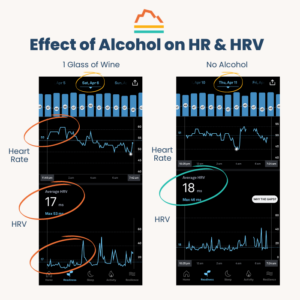 My Oura Ring functions as a biofeedback mechanism, demonstrating my meditation’s physiological impact. This is a tracing of an abbreviated 10-minute meditation session. The average heart rate variability of 84 ms reflects a value fourfold higher than my average nocturnal value for the year. Compared to being asleep, I reach a state four times more chill during meditation, quantitative evidence of its powerful impact!Peripheral skin temperature correlates with heart rate variability. This tracing demonstrates meditation’s impact on peripheral skin temperature, which progressively warms during the session. When we’re nervous (increased sympathetic tone), our hands become cold and clammy. As we calm down, they warm up, reflecting an increased parasympathetic tone. My finger became warmer during the meditation session.
My Oura Ring functions as a biofeedback mechanism, demonstrating my meditation’s physiological impact. This is a tracing of an abbreviated 10-minute meditation session. The average heart rate variability of 84 ms reflects a value fourfold higher than my average nocturnal value for the year. Compared to being asleep, I reach a state four times more chill during meditation, quantitative evidence of its powerful impact!Peripheral skin temperature correlates with heart rate variability. This tracing demonstrates meditation’s impact on peripheral skin temperature, which progressively warms during the session. When we’re nervous (increased sympathetic tone), our hands become cold and clammy. As we calm down, they warm up, reflecting an increased parasympathetic tone. My finger became warmer during the meditation session.
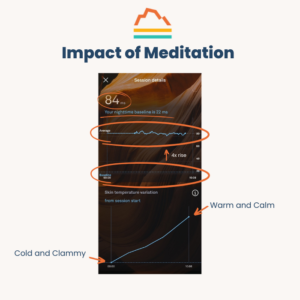
The Benefits of Continuous Glucose Monitoring

In earlier blog posts, I’ve discussed the concept of Metric-Derived Empowerment Cycles (MDECs).
Measurement devices now provide actionable data that incentivize and track the results of healthy behaviors. It can be a long journey from thinking about behavior change to initiating change to sustaining it. That’s human nature. We need all the help we can get.
Generating a metric, or “putting a number on it,” can be a very powerful tool to motivate behavioral change by quantitating a baseline and providing a measurable path to improvement. Continuous glucose monitors enable one of the most valuable MDECs we use at Banner Peak Health.
Chronically elevated blood glucose levels are associated with the development of diabetes, which elevates the risk for a wide range of illnesses, including heart disease, stroke, cancer, and kidney disease. The root causes of elevated glucose are multifactorial and include diet, stress, exercise, and sleep. The physiology of blood glucose is very complex.
What Is a Continuous Glucose Monitor?
The ability to measure glucose levels has come a long way since the days when practitioners would taste urine to detect sweetness, indicating excess sugar excretion. (The term diabetes mellitus is derived from Greek diabetes, meaning to pass through, and from Latin mellitus, meaning honey or sweet.)
By the 1840s, tests using chemical reagents could detect sugar in urine. By 1913, blood glucose levels could be measured in a lab. By the 1960s, blood glucose could be semi-quantitatively measured using a chemical test strip reacting with a drop of blood, though the process was cumbersome and not available for home use.
The true revolution in blood glucose monitoring came in the 1980s with the advent of handheld glucometers and reagents on test strips, allowing convenient self-monitoring. There were still significant constraints, however. One-time-use test strips were expensive, and the process of poking and testing was painful and time-consuming. Only the most dedicated of patients could comply with a two- to four-times-a-day testing regimen.
The technology in continuous glucose monitors, such as the current models, the Dexcom G7 and Freestyle Libre, has progressively improved over the last 15 years. The monitors have a very small tube, or cannula, that inserts into the subcutaneous region under the skin. The probe contains enzymes that generate an electrical signal proportional to the concentration of glucose in the interstitial fluid. Strictly speaking, blood glucose is not being measured directly. However, in most circumstances, the interstitial fluid is very close to the blood glucose level, with current models accurate to less than 10% deviation from blood levels.
The sensor remains attached to the skin for 10–14 days, depending on the model, and sends the results to a smartphone for patient viewing and subsequent transmission to a healthcare provider.
Modern Continuous Glucose Monitoring
The cost and complexity of early continuous glucose monitors relegated their use to the most complicated diabetic patients — those requiring insulin therapy and at greater risk for dangerously high and low levels of blood glucose. Today, the devices are also used for less complicated diabetic patients. They still require a prescription, however.
Just this year, Dexcom released a model, Stelo, that will be approved for sale without a prescription. It offers the same accuracy as their prescription model, the G7, but won’t be approved for those requiring insulin treatment.
The less expensive and more widely available Stelo model opens the way for continuous glucose monitoring to move from treatment of diabetes to prevention of diabetes.
Diabetes represents an unfortunate culmination of many years of progressive metabolic dysfunction. This lengthy process presents ample opportunity to modify behavior and prevent the onset of diabetes.
In medicine 2.0 (disease treatment), medications are the dominant treatment modality. In contrast, medicine 3.0 (disease prevention) relies predominantly on lifestyle choices — how you eat, sleep, exercise, and manage stress. Continuous glucose monitors, once relegated to the realm of medicine 2.0, are now poised to realize their full potential as a powerful tool for medicine 3.0!
Who Should Use a Continuous Glucose Monitor?
As part of screening blood tests, you’ve most likely had your fasting blood glucose level and possibly hemoglobin A1c (HgbA1c) measured. A fasting (12 hours without eating) blood glucose level can indicate your risk of diabetes:

Your HgbA1c level reflects your average glucose level over the past three months (see footnote 1) and is expressed as a percentage:

An elevated fasting blood glucose or HgbA1c indicates that you are at increased risk of developing diabetes or that you have diabetes. And these aren’t rare findings. An estimated 40 million adults in the U.S. have diabetes, and close to 100 million have prediabetes.
Several classes of medications can reduce the risk of progressing from prediabetes to diabetes as well as treat existing diabetes. However, the underlying causes of diabetes — insulin resistance, excess caloric intake, reduced exercise, and fat deposition — are best treated by reversing the lifestyle choices that created them in the first place. Medication can provide a backup safety net if lifestyle modifications don’t create enough benefit.
Continuous glucose monitoring offers a vital monitoring tool for anyone with borderline or elevated fasting blood glucose and HgbA1c levels to better understand their body’s unique physiology and guide lifestyle modifications.
How to Use Data From Continuous Glucose Monitoring
People often have an overly simplified understanding of blood glucose, envisioning a straightforward pipeline from the gut to the blood. Sugar goes in one side and comes out the other. The reality is much more complex.
I envision blood glucose as analogous to a beach ball, surrounded by multiple foam pellet guns bombarding the beach ball with shots of varying intensity from different directions. The movement of the beach ball is determined by the net effect of all the pellet guns. Some of these “pellet guns” are:
- Physical activity — Increased muscle cell usage consumes more glucose.
- Stress — Increased hormone levels of adrenaline and cortisol raise glucose.
- Illness — Infections increase adrenaline and cortisol, which raise glucose.
- Sleep deprivation — Lack of sleep increases adrenaline and cortisol, which raise glucose.
- Meal timing — Longer duration between eating reduces glucose levels.
- Medications — Some medications, such as glucocorticoids, can markedly raise glucose; others, such as thiazide diuretics and statins, can subtly raise glucose.
- Food intake — Certain foods raise glucose more rapidly; individual responses to different foods can vary considerably.
By wearing a continuous glucose monitor, you can learn about the unique effect of all these variables and more on your personal glucose levels.
Those using continuous glucose monitors to reverse prediabetes most commonly use them for several months.
The first step involves understanding the magnitude of the problem. Knowing your blood glucose level every five minutes, 24/7, provides a much more nuanced understanding of your metabolism than a one-time fasting level or an average level over 90 days.
The second step involves identifying the unique variables that influence your blood glucose levels. What happens after a fight with a family member, a poor night’s sleep, a head cold, a long hike, or a particular type of meal?
A big part of this learning process involves your response to different foods. Yes, a sugary soda will generate a rapid blood sugar spike in most people. However, we’re learning that there exists much greater variation in individual responses to different foods than previously thought. You may process a sweet potato very differently than someone else.
The third step involves using the continuous glucose monitor to track the progress of your behavior modifications. Basically, you run a set of experiments on yourself. What happens if you go to bed an hour earlier, meditate, eliminate a bedtime snack, eat brown rice instead of white, cut out soda and juice, or vary the carbohydrate content of your meals? Once you learn how you respond, you can change your habits and see the benefits.
Often after a month or two, the law of diminishing returns kicks in and the rate of new knowledge declines. If successful, you reach a new equilibrium of behaviors and maintain your blood glucose at a healthier level. You won’t need continuous glucose monitoring in the long term.
Some people may require more time or another round of usage. However, for those without medication-treated diabetes, the process should be relatively brief.
Final Thoughts
We’re living amid a silent epidemic of metabolic dysfunction. Many diabetics, and the vast majority of those with prediabetes, are unaware of their status.
At Banner Peak Health, we’re careful to identify risk factors like prediabetes and diabetes and are very aggressive in working with patients to mitigate their risks. Continuous glucose monitoring provides patients with a powerful tool to learn about their unique glucose metabolism and guide them to better health.
Footnote:
1. HgbA1c measurement relies on an interplay between red blood cells and glucose in the blood. Hemoglobin is a large, complex protein that binds iron and carries oxygen in the blood. Red blood cells are packed with hemoglobin, allowing them to transport oxygen throughout the body.
Red blood cells last about three months before they’re degraded, and their hemoglobin is broken down and recycled. Glucose sticks to hemoglobin molecules in a dose-dependent fashion. The higher the concentration of glucose, the more of it will stick to hemoglobin.
HgbA1c reflects the percentage of hemoglobin molecules with glucose stuck to them. Because red blood cells and the hemoglobin within them only last around 90 days, HgbA1c reflects an average level of glucose in the blood during that time.

